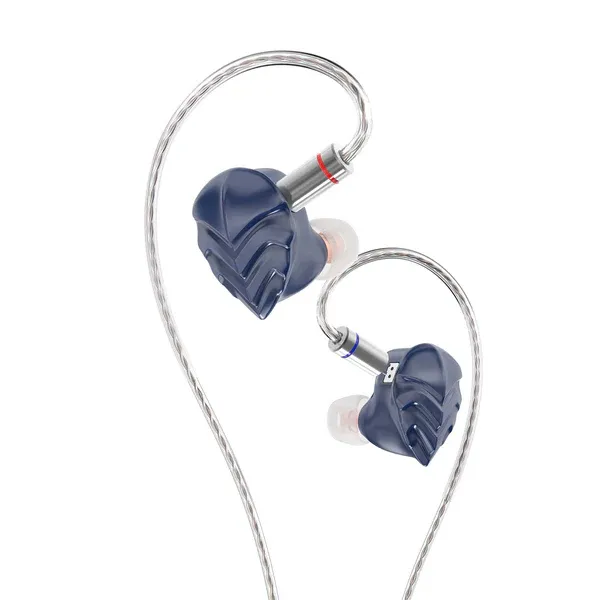Mk12 Turrisvs.SA6 Mk2
Sound & Specs Comparison
Information
Both IEMs are widely regarded in the audiophile community. See how they differ in terms of sub-bass response, upper mids, clarity, and overall tonality. Spider charts and rating breakdowns included.
Objective Comparison
Facts, details, stuff.
| General Info | Mk12 Turris | SA6 Mk2 |
|---|---|---|
| Brand | Hidizs | DUNU |
| Country | – | China |
| IEM Description | The MK12 Turris brings a striking design together with a smooth and full-bodied sound. It’s an all-rounder that aims to please a broad range of musical tastes while offering style and substance in equal measure. | – |
| Price Level | 100 – 500 | 100 – 500 |
| Housing & Driver | ||
|---|---|---|
| Driver Config | Single Dyn. Driver | Multi-BA |
| Driver Types | Dynamic Driver | Balanced Armature |
| Shell Material | – | – |
| Cable | – | – |
| Technical | ||
|---|---|---|
| Freq Range | 10-45kHz | – |
| Impedance (Ω) | 32 | – |
| Sensitivity (dB) | 111 | – |
| Crossover | – | – |
| Platform Info | ||
|---|---|---|
| Comments | 1 | 0 |
| Visit Count | 13 | 128 |
| External Reviews | 1 | 1 |
Meta Ratings
SA6 Mk2 delivers slightly better sound reproduction, offering a more immersive and engaging experience overall. Its tonal balance, clarity, and spatial imaging stand out clearly compared to Mk12 Turris (8.3 vs 7.8). For comfort fit, Mk12 Turris performs softly better (7.3 vs 6.6). Users may find the SA6 Mk2 cable considerably more confidence-inspiring for both daily use and long-term durability. Accessory-wise, It includes measurably more practical and high-quality items, enhancing both protection and usability.
| Mk12 Turris | SA6 Mk2 | |
|---|---|---|
| Sound | 7.8 | 8.3 |
| Comfort Fit | 7.3 | 6.9 |
| Build Quality | 7.5 | 7.5 |
| Stock Cable | 4.8 | 7.8 |
| Accessories | 5.0 | 7.0 |
Sound Characteristics
Mk12 Turris produces sub-bass that is a more textured and present in cinematic or bass-heavy tracks (8.5 vs 6). It enhances basslines with a more energy and grip, giving them a livelier feel compared to SA6 Mk2 (8 vs 7). Listeners may find the low-end impact on It b more engaging during high-dynamic passages (8.5 vs 8). It achieves d better warmth and coherence in the lower mids, bringing more realism to guitars and cellos (9 vs 7.3). Instruments like violins and brass are portrayed with m more brilliance on It, while SA6 Mk2 sounds slightly dull (9 vs 7.3). The highest frequencies on It feel b more natural and less rolled-off compared to SA6 Mk2 (9 vs 8.3). It paints a c broader sonic landscape, offering better instrument positioning across the stage (8 vs 7). It retrieves micro-details n more effectively, revealing nuances that are less apparent in SA6 Mk2 (8.5 vs 7.3). It organizes musical elements m better across depth, enhancing spatial realism over SA6 Mk2 (8.5 vs 6.8). It shows s better control of masking effects, maintaining clarity across frequency ranges better than SA6 Mk2 (8.5 vs 7). Notes on It feel a more grounded and weighty, whereas SA6 Mk2 can sound thin or hollow (8.5 vs 7.3). It hits with a more authority during transients, creating a more explosive effect than SA6 Mk2 (7.5 vs 7). It controls harsh sibilant peaks m more effectively, making vocals smoother than on SA6 Mk2 (9.5 vs 6.8). It renders timbres with d better harmonic balance, preserving the character of instruments more accurately than SA6 Mk2 (8.5 vs 7). Across the frequency range, It stays a more consistent in tonal balance, resulting in a smoother listen than SA6 Mk2 (8.5 vs 7.8). Subtle ridges and granularity are conveyed b more clearly on It, adding life that SA6 Mk2 doesn’t quite match (8 vs 7.3).
| Mk12 Turris | SA6 Mk2 | |
|---|---|---|
| Sub Bass | 8.5 | 6.0 |
| Bass | 8.0 | 7.0 |
| Bass Feel | 8.5 | 8.0 |
| Lower Mids | 9.0 | 7.3 |
| Upper Mids | 8.0 | 7.8 |
| Lower Treble | 9.0 | 7.3 |
| Upper Treble | 9.0 | 8.3 |
| Sound Stage Width | 8.0 | 7.0 |
| Detail | 8.5 | 7.3 |
| Layering | 8.5 | 6.8 |
| Masking | 8.5 | 7.0 |
| Note Weight | 8.5 | 7.3 |
| Slam | 7.5 | 7.0 |
| Sibilance | 9.5 | 6.8 |
| Timbre Color | 8.5 | 7.0 |
| Tonality | 8.5 | 7.8 |
| Texture | 8.0 | 7.3 |
Tonal Signature
// Nothing to compare yet.
